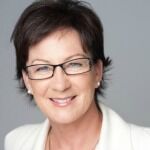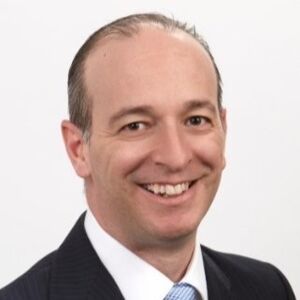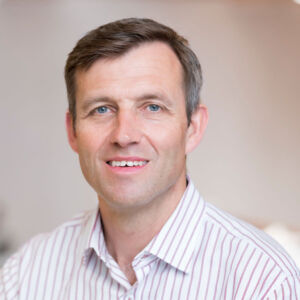"The SMSF sector has a vital role to play": Q&A with Andrea Slattery

When Andrea Slattery co-founded the SMSF Association in 2003 the SMSF sector was facing an uncertain future. A lot has changed since then. With Andrea now having moved on to focus on the next chapter of her career, she talks to Industry Moves about the challenges and highlights of her time at the Association and of the sector's growth. She also reflects on her childhood, offers some wisdom to her younger self, and tells a very funny story of how she met her husband.

When Andrea Slattery co-founded the SMSF Association in 2003 the SMSF sector was facing an uncertain future. A lot has changed since then. With Andrea now having moved on to focus on the next chapter of her career, she talks to Industry Moves about the challenges and highlights of her time at the Association and of the sector's growth. She also reflects on her childhood, offers some wisdom to her younger self, and tells a very funny story of how she met her husband.
How has the SMSF industry changed since you co-founded the SMSF Association in 2003?
When the Association was set up in up in 2003, the very future of the SMSF sector was in doubt. There were about 110,000 SMSFs and funds under management (FUM) stood at $109 billion. Today, it is the largest superannuation sector in terms of FUM ($755 billion), has about 1.1 million members, and boasts 596,000 funds. Trustees now get their strategic advice from an SMSF specialist - a profession the Association helped build and nurture.
What was the motivation for setting it up?
To establish an organisation for the entire SMSF sector that focused on building best practice professional standards for everyone (professionals and trustees). Underpinning this goal was the philosophical belief that every Australian has the right to a good quality of life in retirement - and for them to be in control it. The sub-text is that better retirement income solutions happen when professional advisors and trustees are armed with the best and latest information, especially in the growing and sometimes complex world of SMSFs. This required not only improving the professional and ethical standards of advisers, but to establish the SMSF specialist as a profession in its own right. The fact this has been achieved means SMSFs now have access to the highest quality advice to ensure they can plan their retirement income strategies, whether they are in the accumulation or pension phase.
What have been some of the biggest challenges during your tenure?
We needed to get everyone to understand that the SMSF sector has a vital role to play in the financial system - and this has certainly proved the case. Major government inquiries always pose a challenge for any industry association. For the SMSF Association, the Cooper Review (the final report was handed down in 2010) was a significant challenge as it was first time what we were trying to establish for the SMSF sector came under public scrutiny. To a lesser degree it happened with the Financial System Inquiry and the Productivity Commission Review of Superannuation. Other challenges included being accepted on government bodies and developing our national conference to where it's now the biggest annual event on the superannuation calendar.
And the highlights?
There have been many, but I think for the sector to get a clean bill of health from the Cooper Review was an enormous fillip. What you must remember is the Review began not long after the Global Financial Crisis (2008), so if there had been structural weaknesses in the SMSF sector the GFC would have exposed them. Yet SMSFs performed well through and after the crisis - and the Cooper Review confirmed this. And, it must be said, there was no shortage of critics wanting to either shut down the sector or at least make it more difficult to start an SMSF (i.e. minimum balances). Yet every review post Cooper has essentially confirmed the viability of the SMSF sector. At a personal level, to help co-found an organisation and then work with executive teams, other directors and members to build it has been a rare privilege.
The SMSF Association started off as an organisation for SMSF professionals (SPAA). Tell us about the decision to include SMSF trustees in its membership?
There are two factors at play here. The Association has long been recognised as the pre-eminent voice in the SMSF space by government, regulators and the industry. We realised that by only representing advisors we could not truly claim to be the "voice" of the entire sector; after all, the SMSF community includes 1.1 million fund members. But, also, there was a recognition we needed to go beyond our core focus of raising the standard of advice provided by all SMSF professionals and help SMSF trustees and members become better educated so they could make more informed decisions about their future retirement. The reality is the better educated, the better informed, the more engaged, trustees and members are, the more they will seek professional advice. In essence, we are in the unique position of being to act as bridge between advisors and SMSF members.
What will be the biggest challenges for the industry going forward?
To my mind there are two. First, getting political and regulatory stability around superannuation and, second, for the industry to realise the importance of being united and growing rather than being at odds so all Australians can benefit from it.
Do you have an SMSF?
Yes.
Why would you recommend one?
I believe SMSFs are an excellent vehicle by which people can take control of their retirement income strategies. With the right professional advice and personal commitment, individuals, couples, and families can plan their futures in a way that can be far more rewarding than by belonging to a large APRA-regulated fund. But in saying this I always add one caveat. They are not for everyone. SMSFs require commitment and interest, and if people are not prepared to give this then they should not have an SMSF. Quite simply, it's horses for courses.
What are you planning to do next?
I have embarked on a career as a non-executive director where the aim is to help business change in a way that leaves a legacy not just for the shareholders but all Australians.
Where did you grow up and what was it like?
I grew up on a farm in South Australia in the southern York Peninsula near a town called Warooka. I was blessed by having a wonderful childhood with amazing parents and siblings, and a full country and community life. What I realise now is that my childhood instilled in me my passion for people and community and the understanding of the importance of being respected for my honesty, integrity, passion and hard work.
With the benefit of hindsight, what advice would you give your younger self?
To always work hard, gain wisdom and knowledge and to live a full life. Love of family and community and always treating people with the respect you expect from other people are very important. And in business, making the hard calls to be motivated by the public interest, not self-interest.
What is something most people wouldn't know about you?
I met my husband for the first time when we both filled in for a mixed basketball team. We both competed for a rebound and I headbutted his elbow instead which knocked me out (Paul is 6 foot 4 inches and at the time a very good basketballer and I am 5 foot 3 inches and a bit competitive!). He looked after me that day and we have been together ever since, including nearly 40 years of marriage, 4 sons, 4 daughters-in-law and soon to be 12 grandchildren.



